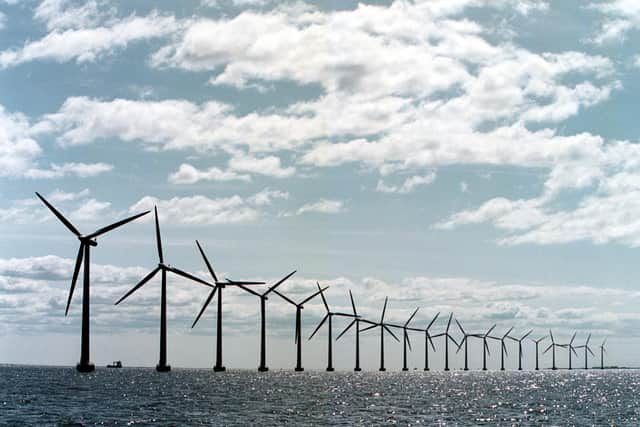New generation of purpose-built vessels required for offshore wind farms - Neil Hehir
Some analysts predict that by 2024 demand for wind turbine installation vessels may outpace supply and the situation is exacerbated by the trend towards larger and heavier wind power turbines. In turn, this has made some wind turbine installation vessels (some of which have only been built in recent years) obsolete.
Adapting existing turbine installation vessels is likely to be expensive, time consuming and in some cases impossible and as wind farm developers continue to favour larger turbines, a new generation of purpose-built vessels will be required in order to meet demand.
Advertisement
Hide AdAdvertisement
Hide AdMarket demand is likely to be for vessels with a larger deck area which can carry more turbines per trip – a feature which will significantly improve operating efficiency and reduce overall project costs.


In order to meet the requirements of the Paris Climate Agreement, the amount of offshore wind capacity (both from fixed and floating turbines) added each year needs to substantially increase by 2030, and consequently more wind turbine installation vessels will be required in a short timescale.
This presents a clear opportunity to vessel owners. However, new vessel construction projects are not without their challenges given the significant cost of these vessels and the lack of shipyards capable of constructing this type of vessel.
The increasing distance of offshore wind farms from shore is posing a challenge in connection with operations and maintenance vessels. Service Operation Vessels (SOVs) are becoming more common within the offshore wind industry in connection with the execution of operation and maintenance activities.
SOVs are required as an alternative to Crew Transfer Vessels (CTVs), due to the distance of many offshore wind farms from the shore. Originally, some SOVs were oil and gas industry vessels but there is an increasing trend towards the construction of vessels specifically for deployment on offshore wind applications. SOVs offer clear advantages over CTVs – they can stay at sea for longer periods of time, can operate in poorer weather conditions, can cope with more significant wave heights and can carry more personnel on board.


Skilled and experienced personnel who are able to operate vessels efficiently and safely in very demanding environments are likely to be at a premium. Mere ownership of suitable vessels will not be enough to satisfy market appetite. Local content rules in relation to vessel crews which apply in some jurisdictions are a further issue which vessel owners need to navigate.
Demand is likely to be for vessels powered by lower carbon solutions. There is an increasing trend towards CTVs and SOVs being designed to utilise hybrid (electric and traditional fuel) technology, while hydrogen and ammonia may also be used more commonly as vessel fuels in the future.
Existing vessel owners will need to move quickly to benefit from the opportunities presented by offshore wind farms.
Advertisement
Hide AdAdvertisement
Hide AdNeil Hehir, Legal Director and specialist in infrastructure, energy and marine sectors at Pinsent Masons
READ MORE
For a Scottish perspective on news, sport, business, lifestyle, food and drink and more from Scotland's national newspaper, go to www.scotsman.com
To subscribe go to www.scotsman.com/subscriptions
Comments
Want to join the conversation? Please or to comment on this article.